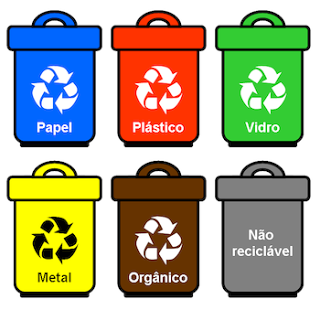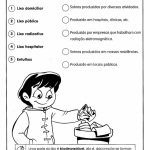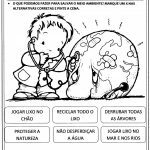Activities on global warming are currently gaining emphasis, mainly due to transformations and the need to care for the environment environment, activities such as the decomposition time of each product, the need to dispose of garbage separately, can be developed.
It's important to start by saying what global warming is and how it changes the temperature of our day to day, how the seas change. make it rain, the greenhouse effect, in short, it is extremely important that before starting the activities they know exactly what they are talking.

Teach:
Collaborate with the selective garbage collection and recycling system.
Make maximum use of natural lighting in domestic environments.
Do not practice deforestation and forest fires. On the contrary, more trees should be planted in order to reduce global warming.
Use of clean and advanced techniques in agriculture to avoid carbon emissions.
Understand the causal relationships between human activities and global warming.
Predict the likely consequences of rising global temperature.

Explaining the consequences of carelessness from global warming is also necessary, as children tend to want to see if there really is a consequence.
In the future, coastal cities are at risk of being submerged.

Among the consequences are climate change: imbalance in ecosystems, extinction of species, as well as forced habitat change, the emergence and growth of deserts, and waves of heat.
With the greater volume of water evaporation, the Earth is more vulnerable to climate catastrophes such as hurricanes, typhoons, cyclones, tsunamis, etc., putting people's lives at risk.

Creating comic strips is also part of the proposed theme.
Teaching how to plant trees can make lessons more dynamic and more complete.

It is important to make it clear to children that some changes we can make ourselves, others, a greater change is needed, however, awareness is already part of an advance.
Below you will find some examples of activities that can be applied to the classroom or homework.

1- Has global warming already started?
Yes, as the planet's temperature rise is already being observed. The years 1995 to 2006 were among the 12 warmest years on record since 1850. In the 21st century (2001-2005), the temperature increased by an average of 0.7ºC compared to 1850-1899. This rise of 0.7 degrees centigrade that has already occurred may seem small, but important effects caused by it, such as melting glaciers, rising sea levels, changes in some plant and animal cycles, among many others. Not only has there been an increase in the global average temperature of the air, but also of the oceans – which in recent years has contributed to the rise in sea levels.
(IPAM, Amazon Environmental Research Institute. Available at: IPAM.org).
Among the elements that are possibly related to global warming, we can EXCEPT:
a) Emission of polluting gases into the atmosphere
b) Greenhouse Effect
c) Decrease in vegetable coverings
d) Thermal inversion
2- One of the international measures to combat global warming most publicized by the press around the world was the Kyoto Protocol, whose main objective was:
a) Proliferating actions to increase the existing vegetation on the planet.
b) Decrease emissions of polluting gases into the atmosphere.
c) Put pressure on developed countries to contribute less to rising temperatures.
d) Preserve marine algae, responsible for the availability of oxygen in the atmosphere.


Did you like it? Share this post on your social network
 WASTE RECYCLING ACTIVITIES
WASTE RECYCLING ACTIVITIES
 3rd year environmental activities
3rd year environmental activities
 5th year environmental activities
5th year environmental activities
 ACTIVITIES ON THE ENVIRONMENT
ACTIVITIES ON THE ENVIRONMENT
 BICHOS JARDIM PROJECT – PRE II
BICHOS JARDIM PROJECT – PRE II
 5 SOUVENIRS FOR ENVIRONMENT DAY
5 SOUVENIRS FOR ENVIRONMENT DAY
This site uses Akismet to reduce spam. Learn how your comment data is processed.